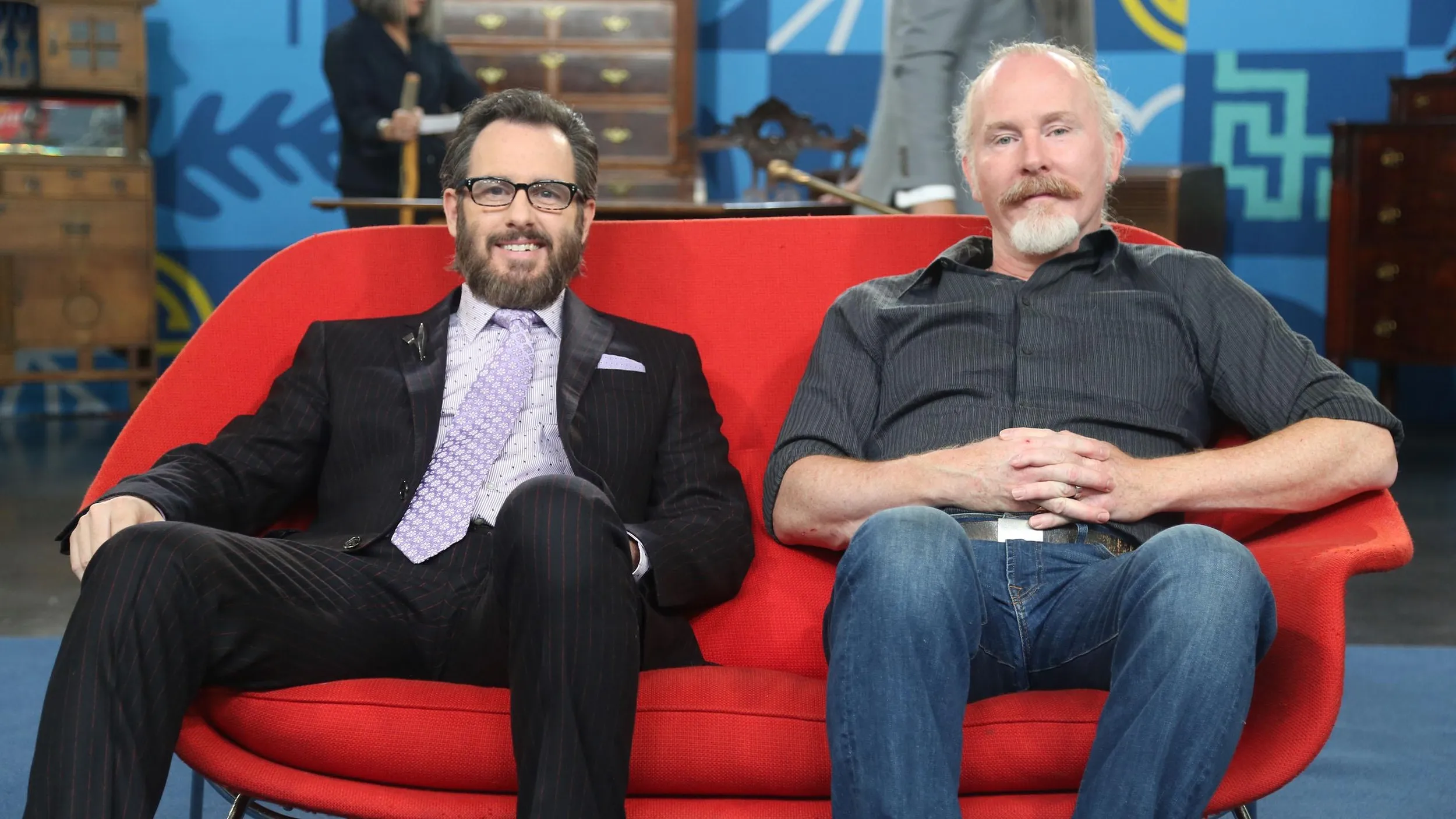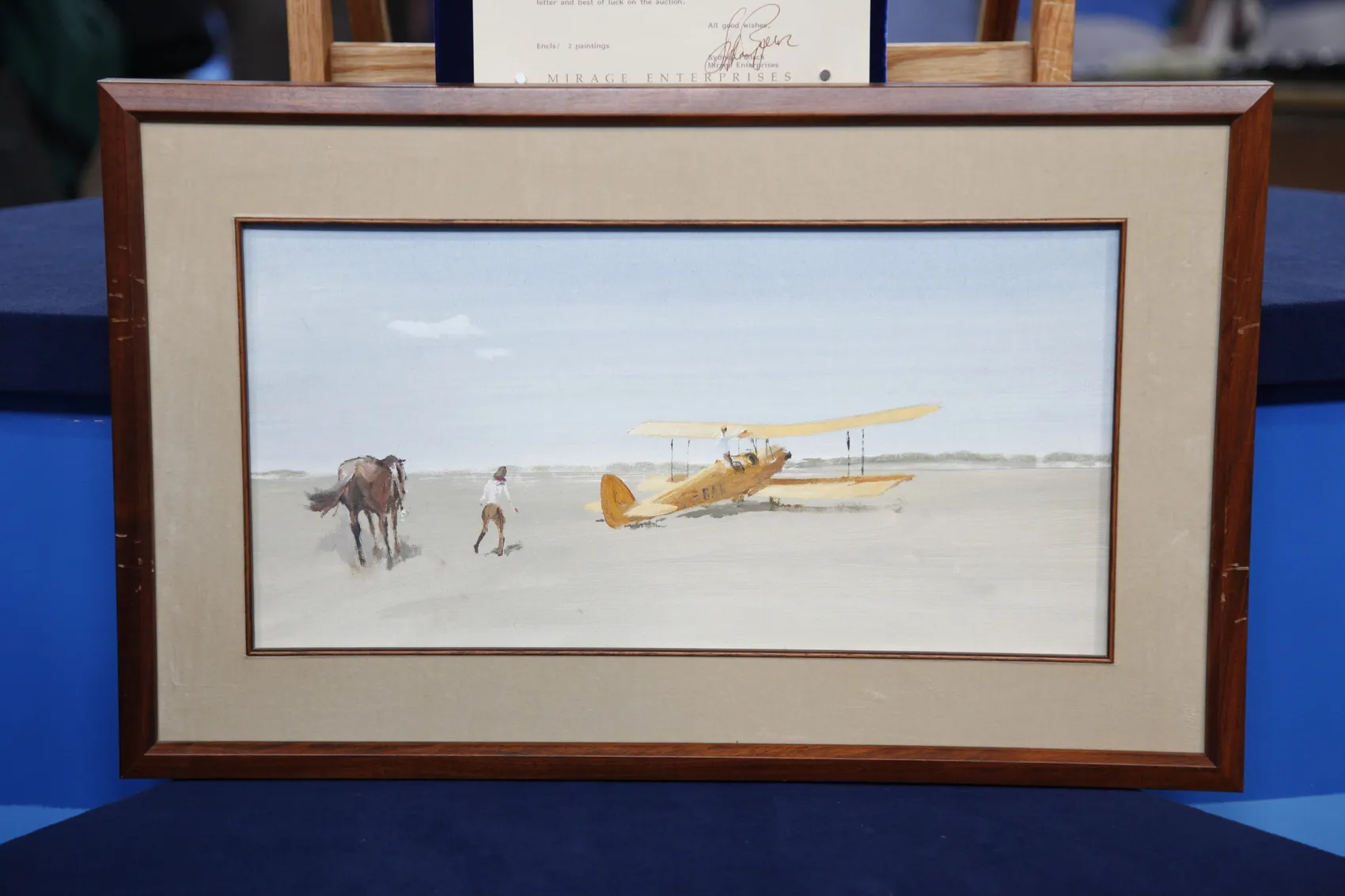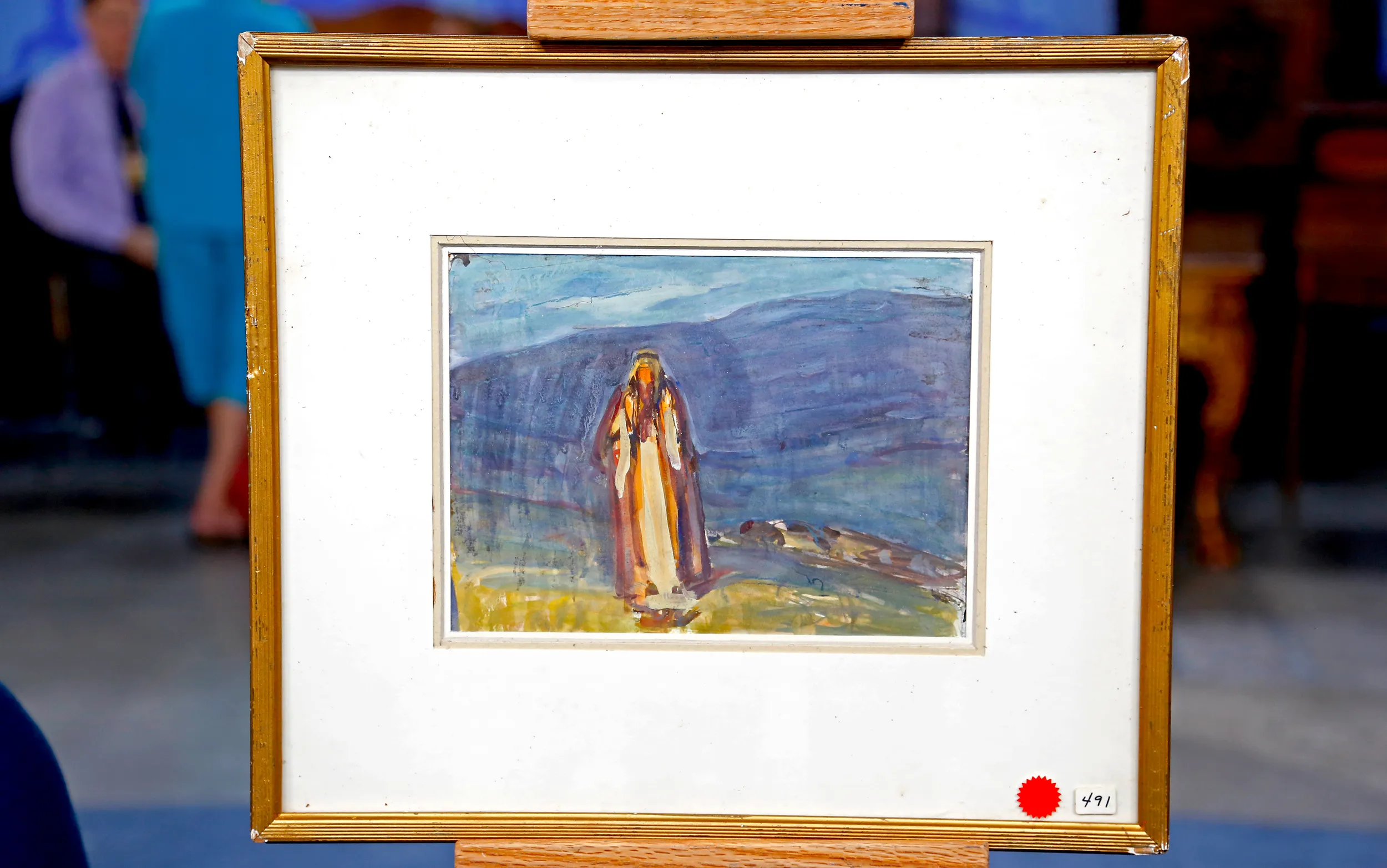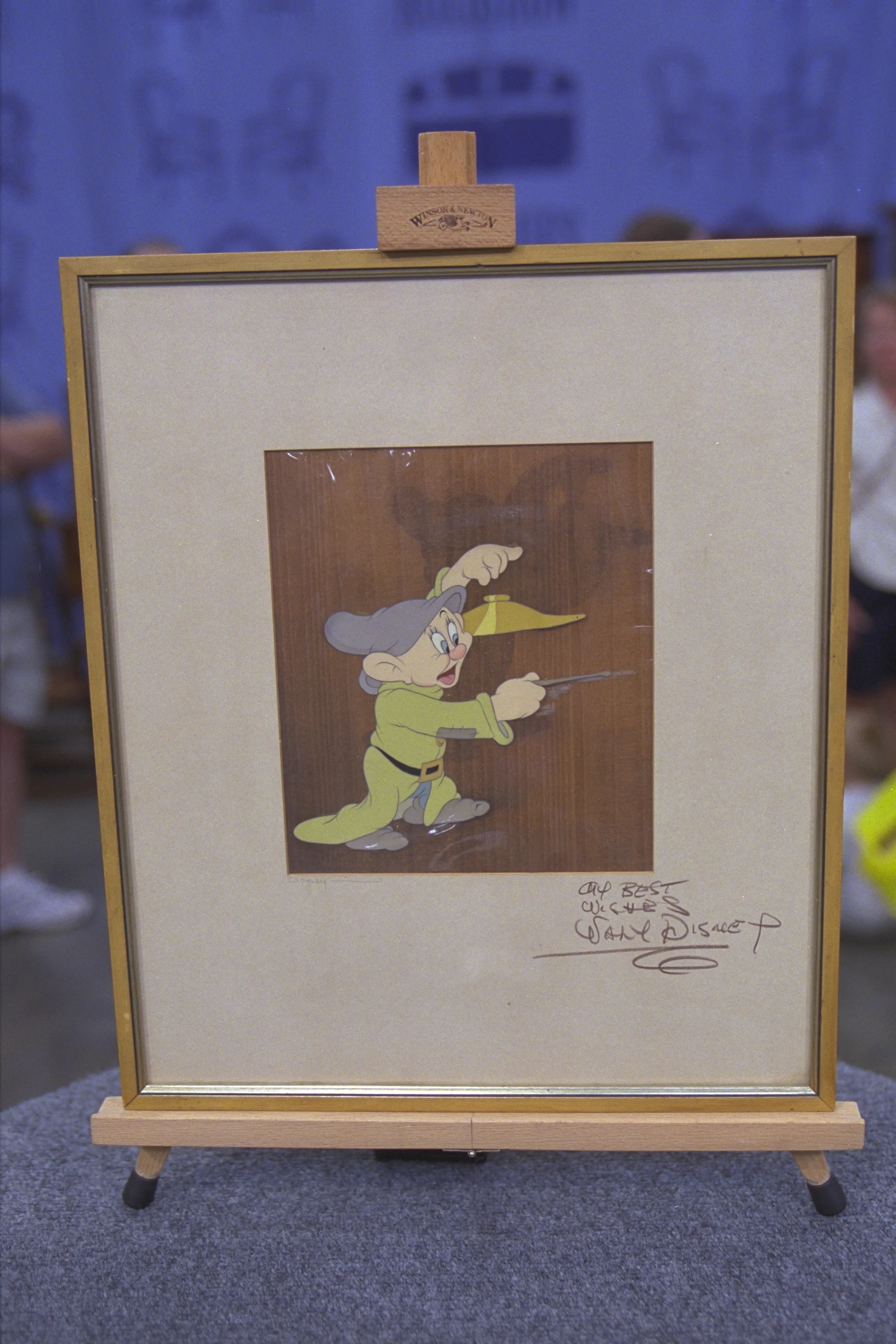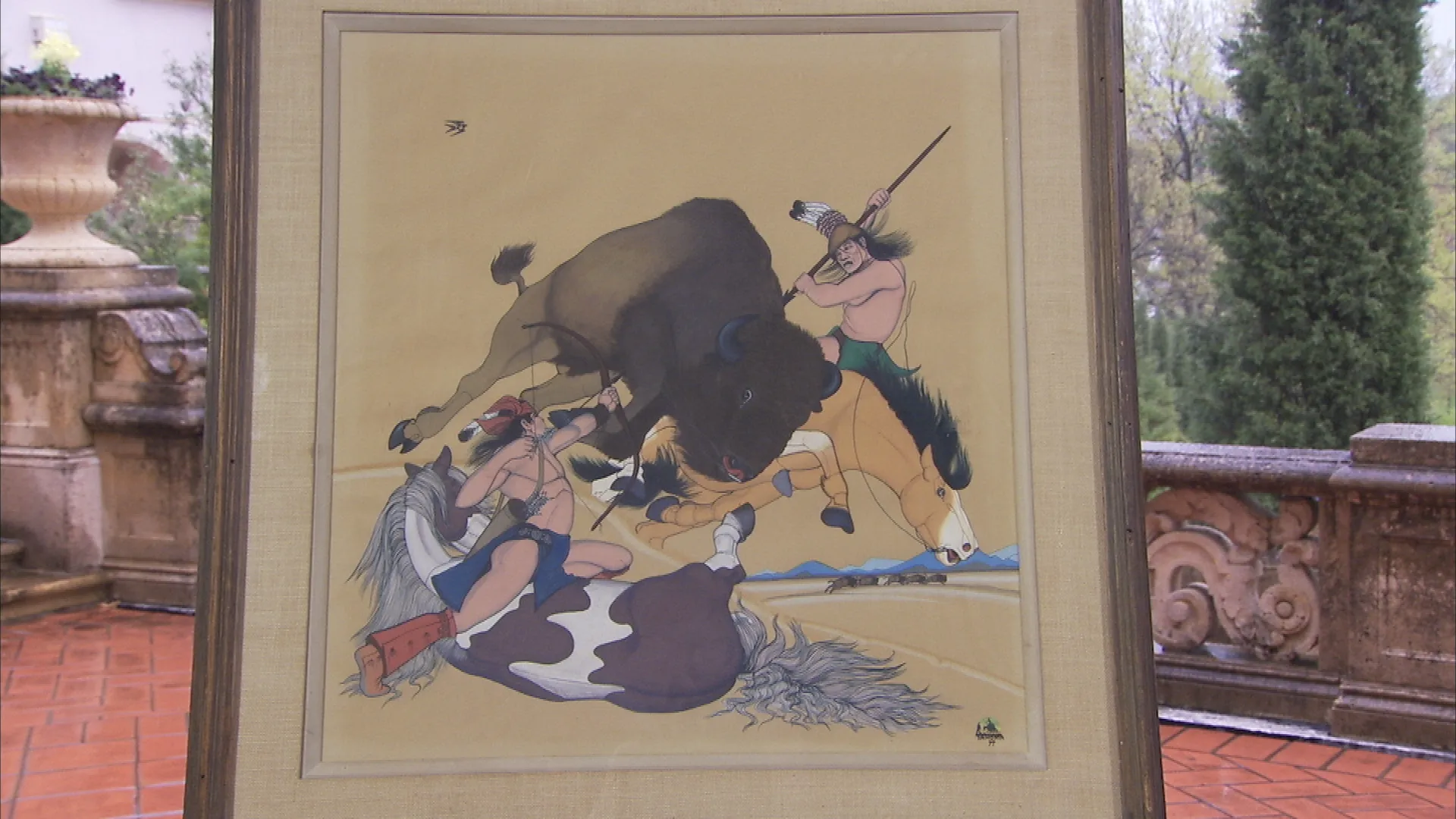GUEST: My grandfather was a title artist at Paramount Studios from the '50s to the '70s. And this is just an item that he did for the movies. This is how they used to do titles, I guess. (laughs) And, I know, it seems kind of funny, but this has been in a storage garage in our family, and my husband was sorting through some things, and we came across it and got it out. We've got a lot of things that he did, but we had never seen this before, and so we unrolled it on the dining room table, and this is what we have.
APPRAISER: Wow. So do you remember your grandfather growing up?
GUEST: Oh, yeah. I was probably in my 20s when he died, or maybe... No, maybe my early 30s. So, yeah, I knew him well.
APPRAISER: Did you knew that he did this kind of work?
GUEST: Oh, yeah, when I was a small child, he was still working there at Paramount. He painted and he did lots of different things.
APPRAISER: So he was quite a talented guy.
GUEST: Very talented. This is all hand-done.
APPRAISER: It's interesting-- you mention you have some other things, too, related to his work. What other kind of things do you have?
GUEST: We have quite a few titles done on glass cells that are about 24 by 36.
APPRAISER: Right.
GUEST: From the movie "True Grit," from "The Life and Times of Judge Roy Bean."
APPRAISER: Sure.
GUEST: Some of those we actually have framed and hanging in our house as a series that are really neat. But this piece, because it's so long, as you can see, it's really hard to know how to display it, and so it really just stays rolled up in a tube. We're trying to figure out how to display it.
APPRAISER: It's tricky.
GUEST: Without cutting it or damaging it or doing anything like that.
APPRAISER: It's tricky-- I love it. It's interesting you have some other glass slides at home, because that really was more the typical thing you would see in a movie. You would see these glass cutouts or these actual printed transparent images they would use for titles. And it was really up to the art director. The art director drove the concept. So in this particular instance, we've got this movie, "Heller in Pink Tights," takes place out in the West. Anthony Quinn, he's got... The leader of this kooky, theatrical troupe, and he's running from his creditors and runs into a gunfighter. There's a gunfight, and at the end, there's this big, wonderful opera. So it's kind of a campy film. And Sophia Loren, obviously, is the female lead. They probably wanted to capture this Western appeal, this kind of old stage appeal, and they said, "Let's do a scroll." And so we have this hand-painted scroll. This would be a gouache, which is an opaque kind of type of watercolor. There maybe actually be some watercolor in here, too-- it's gouache and watercolor. And this would have been, at the time, 1960, when the film was produced, it likely would have been a mechanical machine that would've held the scroll at either end and moved it at a very even pace. So it was all driven by the art director. Your grandfather would have been at his direction, how to do the typeface and how to do the look, but clearly, a lot of your grandfather's creativity is embedded in this piece. Not only do you have the two top stars, you've got Steve Forrest. You remember who Steve Forrest is, from the TV show "SWAT"?
GUEST: Mm-hmm.
APPRAISER: And then what's neat, too, is, Edith Head did the costumes. She's a celebrity in her own right. Now, I had some ideas about display. Cutting it, in my opinion, would be a tragedy. But what you could do is mount it almost the way that it was used. You could have a carpenter or an engineer or somebody build you two scrolls that you could actually crank yourself.
GUEST: Sounds like a good idea.
APPRAISER: There have been some recent auctions of titles, especially the glass cells that you're talking about. And it really depends on the film, and the stars, et cetera. So here we have Sophia Loren really is the top bill. She's still a big deal. They might be conservative on it, but I could easily see this selling at auction between $6,000 and $8,000.
GUEST: Wow. I didn't imagine it had any commercial value. It's really sentimental, but that's kind of fun.

